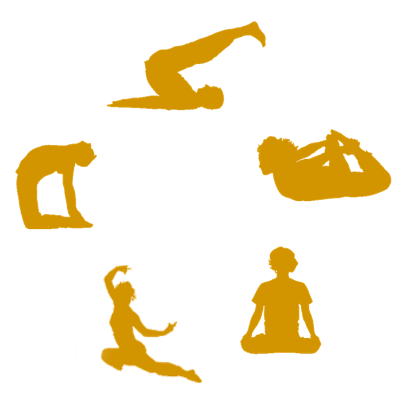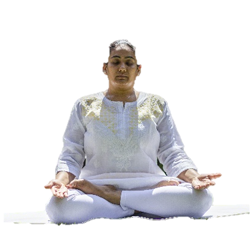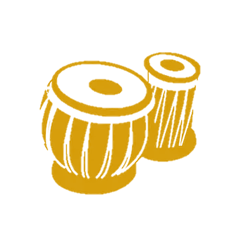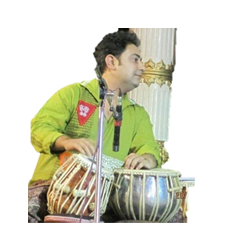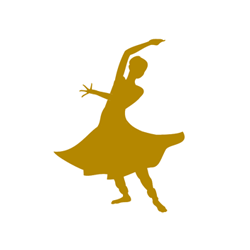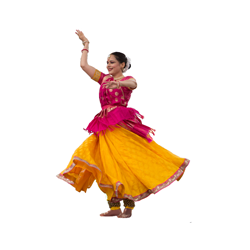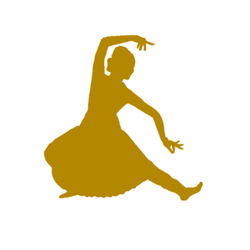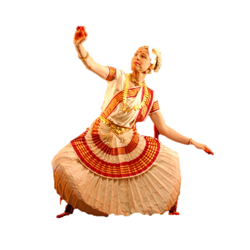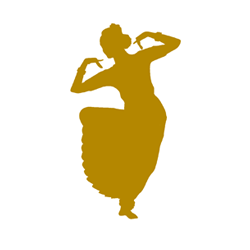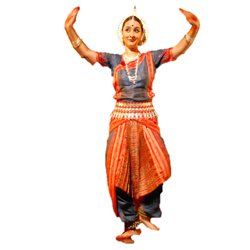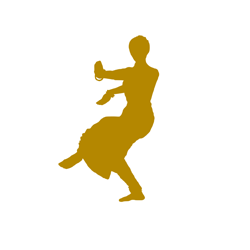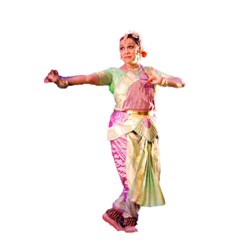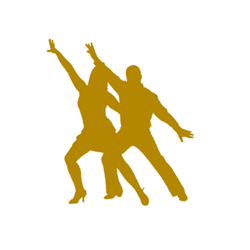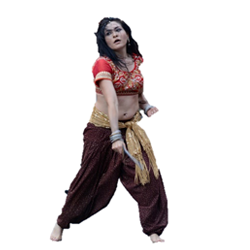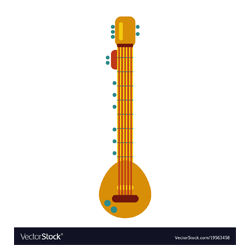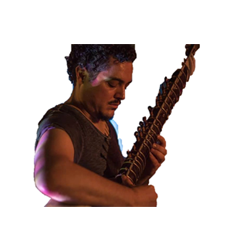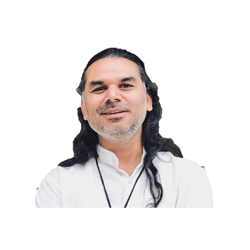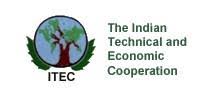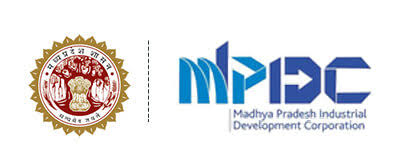Curriculum and Courses
Gurudev Tagore Indian Cultural Centre imparts classes in 11 disciplines in areas of dance, classical music, Yoga, cookery and languages. GTICC inducts around 180 students every month in its training and certification programmes. Classes are conducted 5 days a week.
Office hours of the Cultural Centre: Monday to Friday (9:30 hrs. to 17:30 hrs.). The Centre also remains open on weekend for additional classes or rehearsals, while the offices remain closed.
Yoga
Ms. Diti Kirit Vora
Yoga Instructor
It has long been universally accepted that Sanskrit is a remote cousin of all the languages of Europe, with the exception of Finnish, Estonian, Hungarian, Turkish and Basque. The Vedic literature in Sanskrit and in the Indo-Aryan language is perhaps the oldest recorded language of the world. The relationship of Sanskrit to the languages of the West is indicated by several obvious resemblances, such as pitra and matri, which mean father and mother, respectively. Vedic Sanskrit is in many respects closer than any other Indo- European language to the parent tongue or tongues, and it was the discovery of Sanskrit which enabled Bopp, Rask, and other scholars to establish a dear relationship between the languages of the Indo-European group. It was from India, especially from the south, that the people of South-East Asia learnt the art of writing. The earliest surviving South-East Asian inscriptions, found in Borneo, Java and Malaya, are in Sanskrit. Scripts of the Indian type have been used as far eastwards as the Philippine Islands.
Tabla
Mr. Mallar Mukherjee
Tabla Teacher
Tabla, a pair of small drums, is fundamental to Hindustani classical music of northern India. Originally associated with courtesan dance traditions, Tabla now is used in a variety of genres and styles of Hindustani music. Tabla is the most common percussion and the principal rhythmic instrument in Hindustani music, classical dances and many musical concerts today include a Tabla player. The instrument consists of two drums, one played with the right hand, and the other played with the left.
Kathak
Ms. Meenal Sajwan
Kathak Teacher
Kathak is an Indian classical dance form and has originated in northern India. It is performed by both men and women. The movements include intricate footwork accented by bells worn around the ankles and stylized gestures adapted from normal body language. It was originated by Kathakas, professional storytellers who used a mixture of dance, song, and drama. Like other Indian dances it began as a temple dance, but soon moved into the courts of ruling houses.
Mohiniyattam
Ms. Mariana Flores
Teacher of Mohiniyattam
Mohiniyattam is one of the classical Indian dances having originated in the southern state of Kerala. It is derived from the words “Mohini” (meaning beautiful women) and “attam”(meaning dance) and is literally interpreted as the dance of ‘Mohini’, the celestial enchantress of the Hindu mythology. Thus, Mohiniyattam dance form is a beautiful feminine style with surging flow of body movements.
Odissi
Ms. Sak-Nicte Romero
Odissi Teacher
The history of Odissi dance is almost two thousand years old. Odissi originated in the southern state of Odisha in India and is a highly inspired, passionate, ecstatic and sensuous form of dance. It is predominantly a dance for women, with postures that replicate those found in temple sculptures. Based on archaeological findings, Odissi is believed to be the oldest of the surviving Indian classical dances.
Bharatanatyam
Ms. Patricia Torres
Teacher of Bharatanatyam
Bharatanatyam is one of the most popular classical Indian dances. It is considered to be over 2000 years old and originated in the southern state of Tamil Nadu in India. Originally a temple dance for women, Bharatanatyam is used to express Hindu religious stories and devotion. The dance movements are characterized by bent legs, while feet maintain rhythm. Hands may be used in a series of mudras, or symbolic hand gestures, to tell a story.
Bollywood dance
Ms. Kate Asmara
Teacher of Bollywood Dance
Dance based on the Indian film music is popularly called Bollywood Dance. It comprises of freestyle method of dancing and is performed to narrate or enhance the effect of the situations in the plot of a feature film. Bollywood dance is easy on the eye. Bollywood Dance combines a series of historical symbols and traditions, which originate in India’s numerous traditional dance forms. Classical dance forms and folk dances combine to create modern Bollywood dances. Traditional and contemporary dances from the West also find a place in the Bollywood Dance.
Sitar
Dr. Sidartha Siliceo
Teacher of Sitar
Sitar, a stringed instrument, is popular in northern India. The word sitar is derived from the Persian word sehtar, meaning “three-stringed.” The instrument appears to have descended from long-necked lutes taken to India from Central Asia. The sitar flourished in the 16th and 17th centuries and arrived at its present form in the 18th century. Today it is the dominant instrument in Hindustani music; it is used as a solo instrument with tabla (drums) and in ensembles, as well as for northern Indian kathak(dance-dramas). In the 1960s, the sounds of the sitar influenced a number of rock performers.
Languages: Hindi & Sanskrit
Prof. Yogendra Sharma
Teacher of Hindi and Sanskrit
It has long been universally accepted that Sanskrit is a remote cousin of all the languages of Europe, with the exception of Finnish, Estonian, Hungarian, Turkish and Basque. The Vedic literature in Sanskrit and in the Indo-Aryan language is perhaps the oldest recorded language of the world. The relationship of Sanskrit to the languages of the West is indicated by several obvious resemblances, such as pitra and matri, which mean father and mother, respectively. Vedic Sanskrit is in many respects closer than any other Indo- European language to the parent tongue or tongues, and it was the discovery of Sanskrit which enabled Bopp, Rask, and other scholars to establish a dear relationship between the languages of the Indo-European group. It was from India, especially from the south, that the people of South-East Asia learnt the art of writing. The earliest surviving South-East Asian inscriptions, found in Borneo, Java and Malaya, are in Sanskrit. Scripts of the Indian type have been used as far eastwards as the Philippine Islands.
How to register to any of the above courses
- Registration form (Download here) has to be duly completed and submitted (Also, available at the Cultural Centre).
- The following has to be submitted along with filled-in form:
- Passport size photograph.
- Copy of valid official identification.
- Copy of proof of residency.
- Registration fee for Yoga: MXN$ 200.00
- Registration fee for other programmes: MXN$ 150.00
- Every enrolled student has to pay a monthly fee to continue pursuing a course. (Monthly fee for Yoga: M$ 300.00 and monthly fees for other programmes: M$ 200.00)
- The documents must be delivered at the Gurudev Tagore Indian Cultural Center from Monday to Friday, at the below timings:
- 9.30-13.30 hrs. and 15.30-17.00hrs
- Payment can be made at the Centre by cash or by cheque or bank deposit to the HSBC account 40468 36763
|
Register online for the courses

























